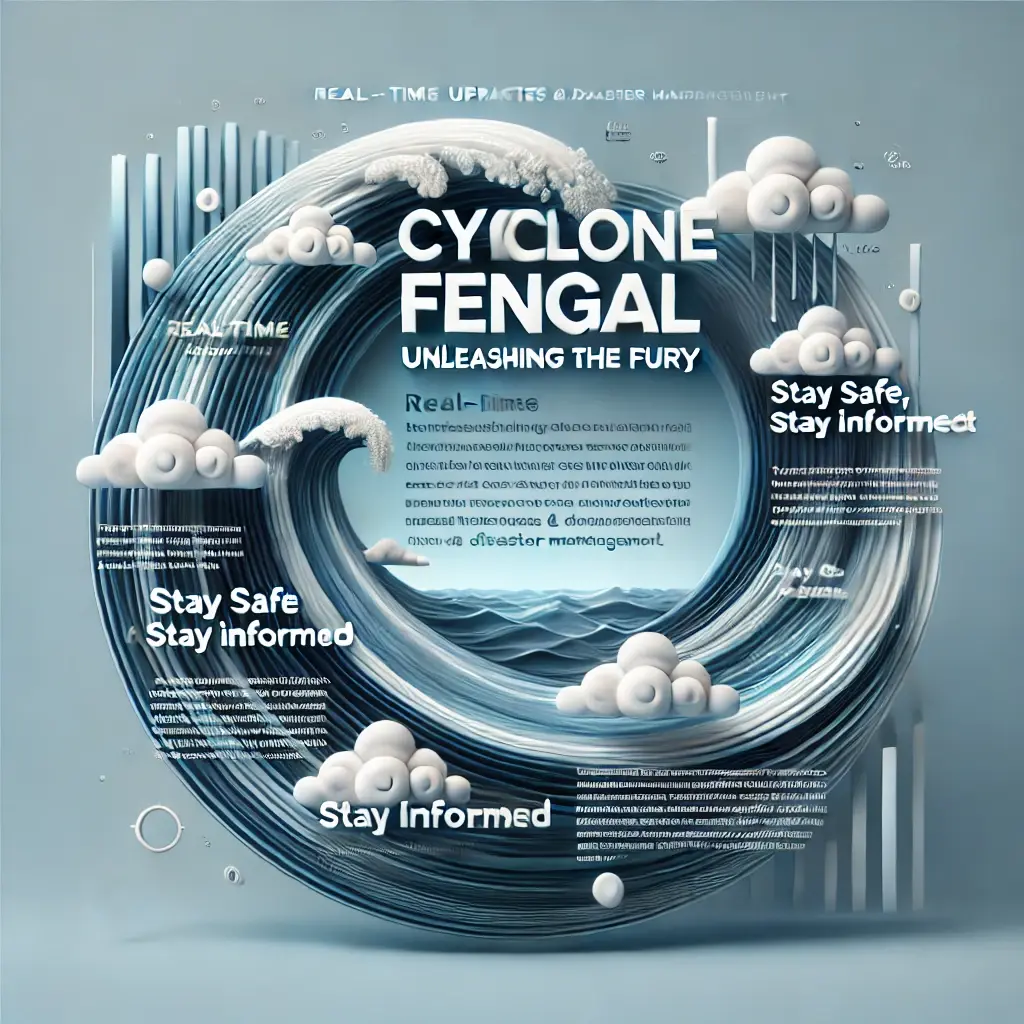Cyclone Fengal, a powerful storm brewing in the Bay of Bengal, is expected to bring widespread destruction and chaos to the coastal regions of Tamil Nadu, Puducherry, and Andhra Pradesh. As the cyclone intensifies, the India Meteorological Department (IMD) has issued warnings for heavy rainfall, strong winds, and possible flooding.
In this article, we’ll delve into the latest updates on Cyclone Fengal, the role of technology in early warning and disaster management, and the safety precautions you can take to minimize the impact of the cyclone.
Cyclone Fengal: Latest Updates
Cyclone Fengal started as a deep depression and is forecast to intensify into a full-fledged cyclonic storm within the next 24 to 48 hours. The cyclone is expected to move northwestwards, bringing heavy rainfall, strong winds, and possible flooding to Tamil Nadu’s coastal regions.
The IMD has issued warnings for widespread rainfall across Tamil Nadu, Puducherry, and Andhra Pradesh. Key districts, including Cuddalore, Mayiladuthurai, Nagapattinam, and Tiruvarur, are likely to witness extremely heavy rainfall.
Cyclone Fengal is expected to make landfall between Chennai and Parangipettai around November 30, 2024. The Tamil Nadu coast is bracing for a potential depression or cyclone, and the Indian Meteorological Department (IMD) has issued warnings for heavy rainfall and strong winds in the region ¹.
If you’re planning to travel between Chennai and Parangipettai, please exercise caution and check the latest weather updates before embarking on your journey. The cyclone’s landfall is expected to bring significant disruptions to transportation and daily life.
Cyclone Warning and Technology
The IMD has been closely monitoring Cyclone Fengal using satellites EOS-06 and INSAT-3DR. These satellites have provided critical data on the cyclone’s intensity, direction, and oceanic winds, helping authorities track the storm’s movement in real-time.
The Indian Navy has also activated a comprehensive disaster response plan, including search and rescue (SAR) operations and humanitarian assistance and disaster relief (HADR) efforts.
Android Technology Impact
Android technology plays a significant role in disseminating critical information during natural disasters like Cyclone Fengal. Many weather apps and emergency alert systems utilize Android technology to provide timely updates and warnings to users.
The Indian government’s National Disaster Management Authority (NDMA) app and the Google Crisis Map are examples of Android apps that provide critical information and alerts during natural disasters.
Stay Informed with Android Newswire
For the latest updates on Cyclone Fengal and other breaking news, download the Android Newswire app. This app provides real-time updates, news, and alerts on various topics, including weather, disasters, and technology.
With Android Newswire, you can stay informed and up-to-date on the latest developments, even on-the-go. Download the app now and stay ahead of the curve!
Conclusion
Cyclone Fengal is a powerful storm that has the potential to cause widespread destruction and chaos. However, with the help of technology and early warning systems, we can minimize the impact of the cyclone and stay safe.
By staying informed, taking necessary precautions, and using Android technology to our advantage, we can weather the storm and come out stronger.
Stay safe, and stay informed!


